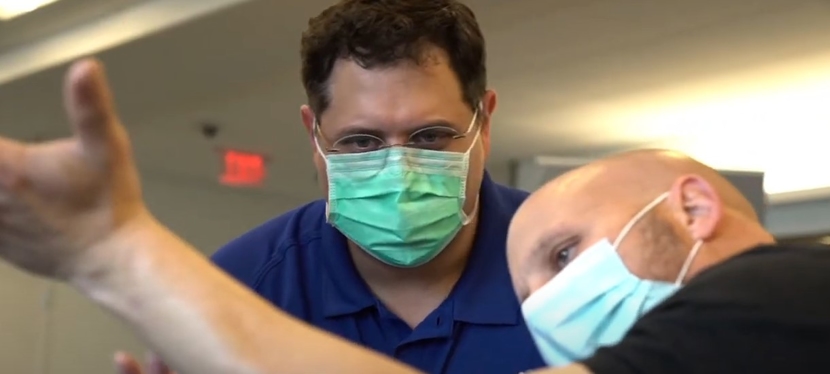What’s the meaning of this? SPF decoded
- Category: Skin Care
- Posted On:

It’s the question on many minds as the temperatures soar—what is SPF, and what do you need to know about it to keep your family safe from the sun?
SPF, short for sun protection factor, measures how much solar energy exposure it would take for protected skin to get sunburned.
Repeated exposure to ultraviolet (UVA) radiation from the sun can cause temporary sunburn, wrinkles, age spots and vision damage, and, eventually, skin cancer.
15 vs 50—is a higher SPF really better?
The SPF number on sunscreen products indicates the level of sunburn protection—the higher the number, the greater the safeguard. So, how do you know which SPF rating is right for you? The answer differs for everyone, depending on exposure-related factors, such as:
- Time of day you’re outdoors. The sun radiates more intensely from the late morning through the mid-afternoon hours, meaning greater exposure to UV rays. So, wearing SPF 15 while gardening in the early morning or evening might protect you two to three times longer than wearing the same SPF 15 while gardening in the afternoon.
- Weather conditions. A cloudy day typically means slightly less sun exposure than a clear day.
- Geographic location. Lower latitudes get more intense sunlight. While Louisiana is not sitting at the Earth’s equator, its subtropical climate translates into a lot of solar exposure.
- Skin tone. Given the same conditions and circumstances, light-skinned people tend to absorb more UV rays than dark-skinned people. That said, people of all skin colors who are 6 months of age or older should wear sunscreen on exposed skin when outdoors.
The U.S. Food and Drug Administration (FDA) recommends that adults and children (6 months or older):
- Protect their skin with least one ounce of SPF 15 or higher sunscreen applied to exposed skin 15 minutes before going outdoors. Use more sunscreen if you need it to completely cover your skin. People with fairer skin may need to use SPF 30 or higher to get similar protection. In fact, in a departure from FDA regulations, the American Academy of Dermatology recommends that everyone use a minimum 30 SPF sunscreen.
- Reapply your sunscreen protection every two hours or more frequently when sweating or getting wet.
Choosing and using the right sunscreen for your family
When you’re shopping for sunscreen, select:
- An SPF of 15 or higher
- A broad-spectrum product, protecting against UVA and UVB rays
- A water-resistant product to protect your skin
- An unexpired product, which means three years from the purchase date
- A lip balm with sunscreen to protect your mouth
When you’re applying sunscreen, coat all skin exposed to the sun. Don’t neglect your ears, entire neck, shoulders and back, top of your feet, and between your fingers and toes. If a closely cropped haircut or hair loss has your scalp exposed, apply sunscreen to it, too.
Accessorize with time and sun exposure in mind
Limit the time you spend in the sun between the hours of 10 a.m. to 2 p.m., when solar rays are at their peak. If you’re going to be outdoors during this time, camp out under a shade tree or make your own shade by bringing along a big umbrella or pitching a canopy tent.
The right clothing and accessories can be very effective in keeping UV rays from reaching your skin. When you’re going to be in the sun:
- Fall in love with a fabulous hat. Pick one with at least a 3-inch brim to help protect your head, face, ears, eyes, neck and lips.
- Choose loose clothing. While it may seem counterintuitive or go against your fashion sense, choose loose clothing in bright or dark colors, covering as much skin as possible. Avoid white and pastel hues. Select densely woven synthetic fabrics like polyester blends or rayon to keep sunlight from reaching your skin.
- Treated fabrics matter. Shop for clothing made from treated fabrics that advertise an ultraviolet protection factor (UPF) rating of 50 or greater, which keeps out 98% of the sun’s rays, according to The Skin Cancer Foundation.
- Go glam. We all know that appearance matters, so wearing large, wraparound sunglasses that block 100% of UVA and UVB rays will make a statement. You’ll add a little mystery to your look while also protecting your eyelids, the skin around your eyes and your eyesight.
Guard your skin against solar exposure by wearing at least SPF 15 sunscreen when outdoors. Explore more ideas for staying safe while enjoying fun in the sun.


